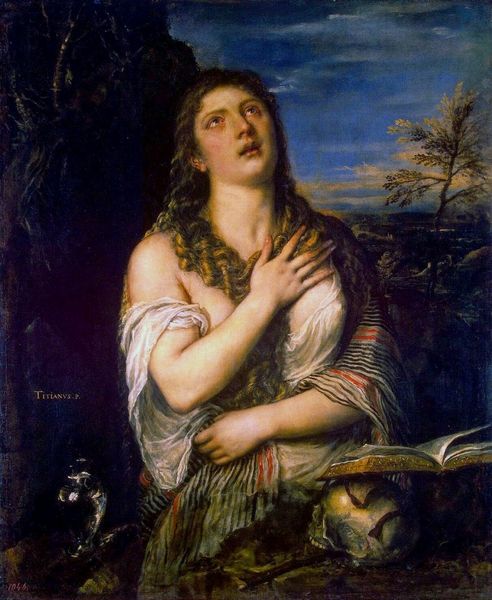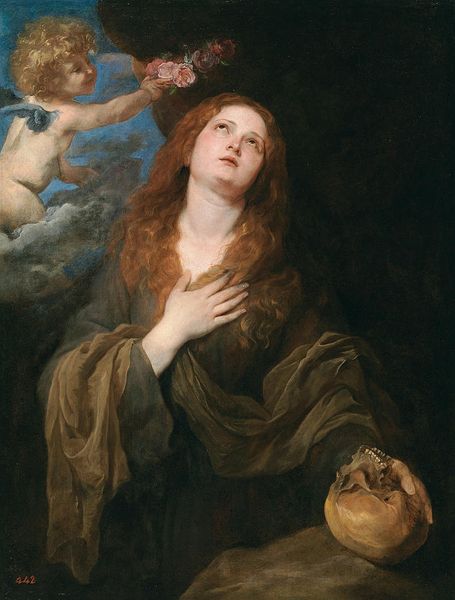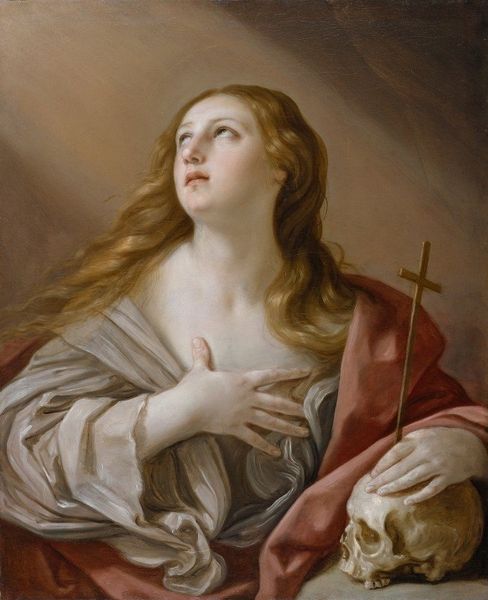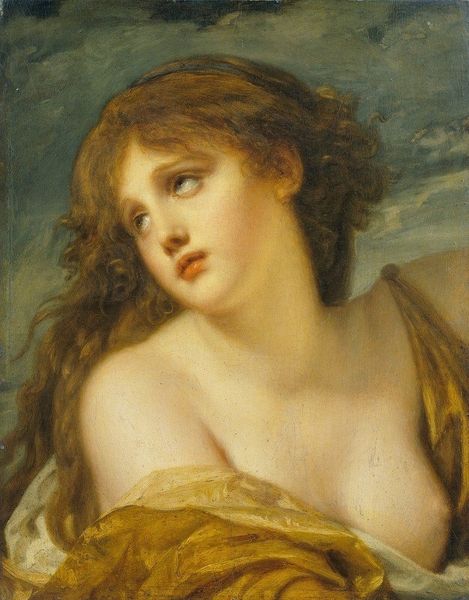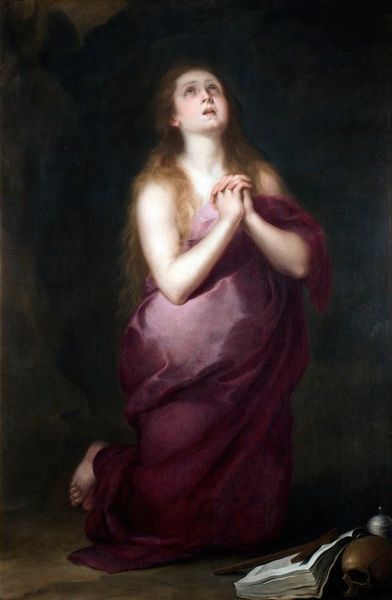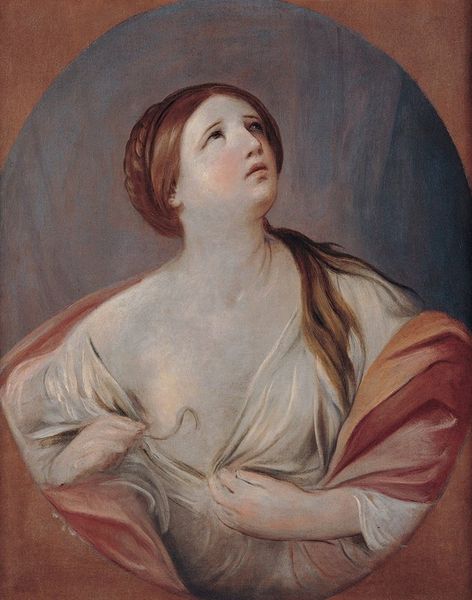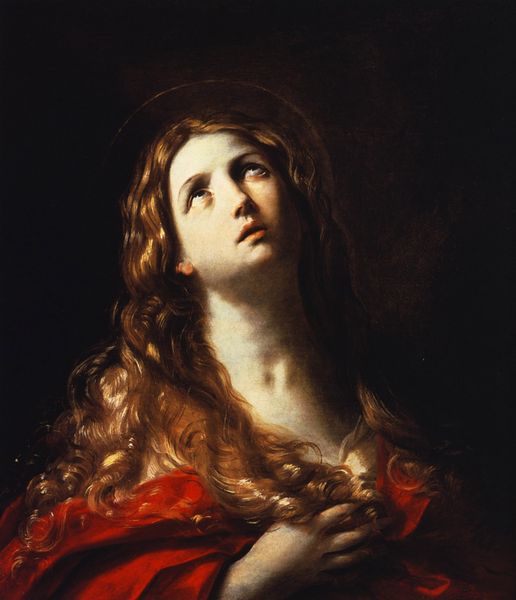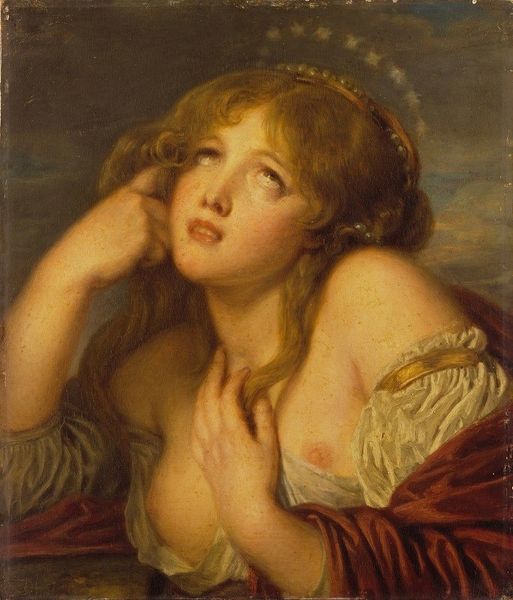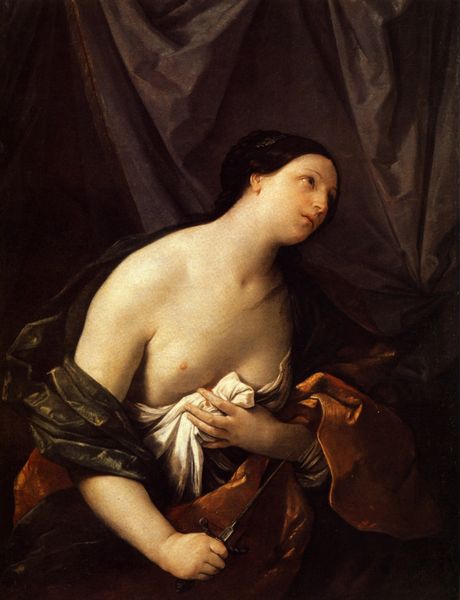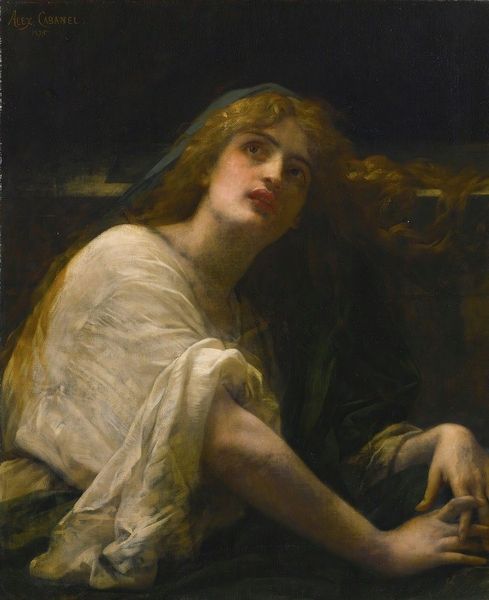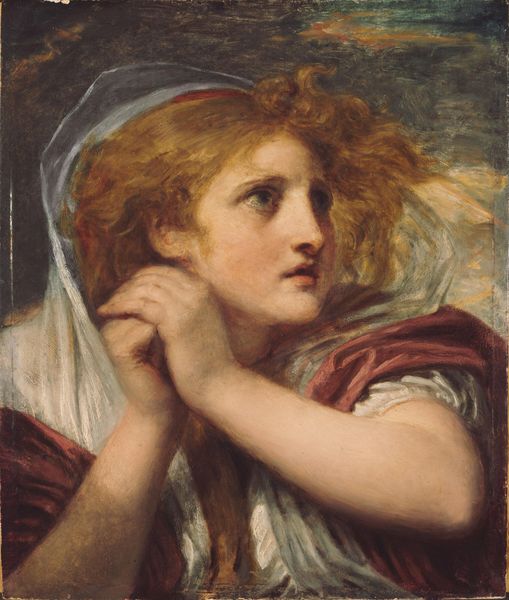
painting, oil-paint
#
portrait
#
venetian-painting
#
painting
#
oil-paint
#
mannerism
#
figuration
#
portrait reference
#
portrait head and shoulder
#
christianity
#
history-painting
#
facial portrait
#
lady
#
italian-renaissance
#
nude
#
portrait art
#
fine art portrait
Copyright: Public domain
Curator: Titian's “Mary Magdalen Repentant,” created around 1531, is a truly arresting image. The Hermitage Museum houses this oil on canvas, showcasing the artist's Venetian mastery. Editor: My immediate response is one of intense pathos. The upward gaze, the hand clasped to her chest, the cascade of hair... it all speaks to profound sorrow and longing. Curator: The iconography here is powerful. Magdalen's long hair, traditionally an emblem of seduction, now becomes a veil of repentance, a visual language deeply embedded in Christian art history. We see this symbolic transformation frequently. Editor: Exactly, but what are the societal implications of representing female repentance through the denial—or near denial—of the body? Does it reinforce patriarchal narratives about women's bodies as inherently sinful? Curator: It’s undeniable that religious art often reflects and reinforces existing power structures. However, I think it's more nuanced here. Magdalen was one of the most complex female figures in Christian thought and a source of female power and religious authority. Her sexuality was both acknowledged and transcended in her later life as a devoted follower of Christ. We see this transformation displayed through a tear stained expression as she gives her complete and total attention and love towards God, relinquishing worldly sin. Editor: True, but even with those elements of female empowerment present, we cannot ignore how the nude or semi-nude female form, even when "repentant," has historically been deployed to titillate and moralize simultaneously. Her gaze suggests shes no longer seeing through earthly means or desire; her focus has been completely turned around. Curator: The Venetian School excelled at color, of course, and that's beautifully evident here in the rendering of the flesh and the Magdalen's glorious auburn hair. The artist gives a clear symbol of what is humanly recognized as feminine form and strength. She embodies feminine beauty through repentance and praise to a divine being; what stronger symbolism can you capture? Editor: I'll concede it is stunning. In some sense, the artist’s talent gives Magdalen the agency to portray herself as her own character versus one controlled and driven by outside influence or the desires of the world. Curator: Ultimately, “Mary Magdalen Repentant” becomes more than just a religious painting; it’s an incredibly wrought investigation of the self and personal transformation. Editor: Absolutely. The painting highlights questions around not only female redemption, but of the enduring entanglement of faith, representation, and power.
Comments
No comments
Be the first to comment and join the conversation on the ultimate creative platform.
